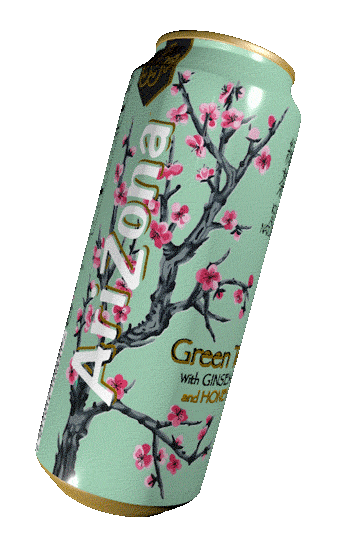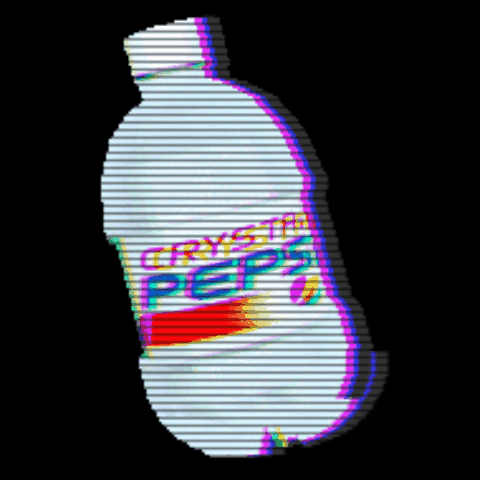Cloud Rap and Transculturalization
Why does any of this matter? Why is so much context necessary to explain how Cloud Rap can function as a "global" genre? Cloud Rap is an extremely diverse genre when it comes to influences and inspirations. It's important that as the reader of this website, you understand the influences and aesthetics of Cloud Rap and how it comes together to create a global genre. Unlike K-Pop and Country music which both came from their own specific cultural experiences, Cloud Rap comes from such an array of cultures that no one nation or group can lay claim to it. Because of its internet-only presence and the cultural exchange that occurs between Asia and the West in Cloud Rap, I think Cloud Rap can be considered one of the few global genres of music.
In David Harvey's paper on time-space compression, he wrote that "collage and eclecticism have come to dominate" music (Harvey 13). The eclecticism and combination of different cultures is something that is a key aspect of Cloud Rap and its aesthetic. The sampling of TV show soundtracks, 60s folk songs, and electronic music is a common practice in the genre. Additionally, it's not uncommon for Western Cloud Rap artists to sample Japanese contemporary music, like in the $uicideboy$' song All That Glitters Is Not Gold (track 31). As we become more aware of other cultures and music scenes, the lines between each scene become more blurred and less clearly defined. This is why so much of Cloud Rap's aesthetics can bleed into other movements like Black Metal, Vaporwave, and Emo. The idea that music and aesthetics are owned by one group is just not present in Cloud Rap. Western Cloud Rap is so influenced by Asian aesthetics and culture and Asian Cloud Rap is so influenced by the West that it's not possible to say that it's a purely Western or Eastern movement. It's a collage of many different aspects of East and West, all coming together to create a musical movement and aesthetic.
Another statement made by Harvey about music is that all of these aspects of different musical movements come together to "form a flexible collage of 'the already seen, the already worn, the already played, the already heard'" (Harvey 13). As I mentioned earlier, it's not uncommon for different Cloud Rap artists to sound similar. Early 2014 $uicideboy$ mixtapes sound like Yung Lean, which sounds like Tohji, which sounds like 6Dogs. However, with all this similarity in aesthetic and musical style, there are no quarrels between artists or accusations of "stealing styles" like there are in mainstream rap. This can be seen in the very stark dichotomy between the Youtube comments on Tohji's Veen Veeen! music video, and Korean rapper Blase's song Some More. The comments under Tohji's Veen Veeen! (that are in English) show no sign of someone claiming he stole from Yung Lean or Bladee, even though his music bears a striking resemblance to those artists. Conversely, under Blase's Some More, the comments are all racist epithets and accusations that he stole his musical style from Playboi Carti (I'm not going to link the video because the comments are so toxic). Cloud Rap is an open community in which anybody can take inspiration from the aesthetics and style of another artist and there's no significant backlash by the community. There are even collaborations between Asian artists and Western artists (tracks 34, 35). In the Cloud Rap community, it is encouraged to work within the visual and sonic aesthetics of the genre and to piece together different sources of inspiration from different cultures to create a sound. In this way, Cloud Rap celebrates the global nature of its style and encourages the globalization of the genre.
In their paper Hip-Hop & the Global Imprint of a Black Cultural Form, authors Marcyliena Morgan and Dionne Bennett describe a process known as transculturalization. In their words, transculturalization "refers to a process of continuous cultural exchange" (Morgan and Bennett 181). They go on to write that "[c]omplex transculturalization processes shape global hip-hop...and they sometimes result in entirely new cultural or artistic products and forms. Consequently, global hip-hop cultures retain many qualitative features of African diasporic and U.S.-based hip-hop cultures while simultaneously engaging in dynamic and prolific processes of aesthetic innovation, production, and diversification." (Morgan and Bennett 181-182). This is the main point of this project as there seems to be a process of continuous cultural exchange between Asia and the West within the subgenre of Cloud Rap. This happens almost to the point that the two cultures become molded as one "multicultural culture." In the BONES and Xavier Wulf song Le No Kutsu (track 32), the producer samples the outro to the Samurai Champloo anime (which was made by Nujabes). In Keith Ape's song It G Ma (track 16), every rapper in the song raps in both English and their native language, as well as references American Hip-Hop tropes. Asian Cloud Rap and Western Cloud Rap borrow so much from each other that it's almost as if the songs are made to be listened to by multicultural audiences. This is another reason why Cloud Rap functions as a global genre.
Finally, I want to touch on the aesthetics and musical styles of Cloud Rap and how that functions globally. The lyrics and aesthetics of Cloud Rap are something that is very accessible to anyone. Most people have the internet and know what it is, and anyone can deal with mental health issues and drug addiction. The themes explored by Cloud Rap's artists are something that can be felt by anyone anywhere. In the Yung Lean documentary Yung Lean: In My Head, fans were interviewed outside one of his concerts and many of them came from different countries and said they all related to the issues he talks about in his music. Additionally, the online distribution and presence of Cloud Rap allow it to be shared between people anywhere in the world. Most of the subgenre's artists are independent, which means that no one producer or creator can own the sound, making it more accessible to artists who want to create with that sound. Cloud Rap's themes, distribution, and aesthetic all allow for it to be shared across cultures and nations as well as created by all cultures and nations.
While there are other genres that could be considered "global" in nature, I think Cloud Rap is unique in that its underground aesthetic and internet presence encourages the idea of multicultural influence and cultural exchange. The ability of artists to sample a multitude of music and to borrow from multiple aesthetics allows them to dip into different cultures while preserving their own. The transculturalization between Asian and Western Cloud Rap also makes it so the cultures can become intertwined in both visual and musical styles. These pieces of different cultural aesthetics and musical styles all come together to create the mosaic of the Cloud Rap subgenre.

















